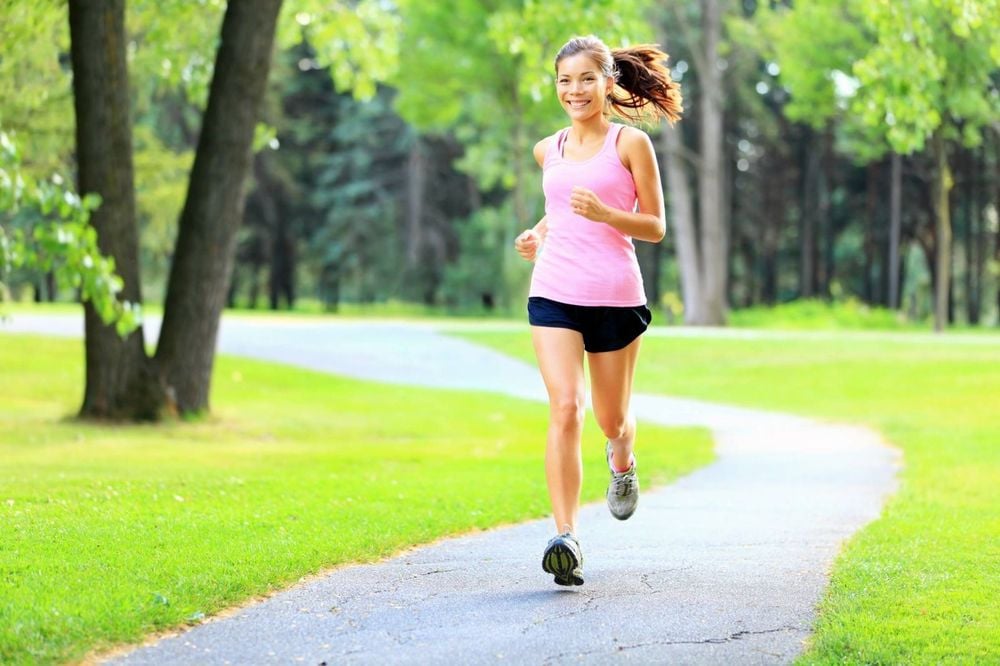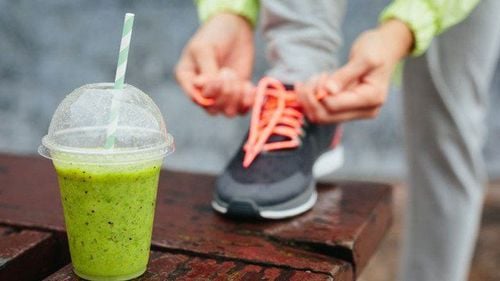This is an automatically translated article.
Many runners have difficulty with their speed and how to run faster. If you're new to running and aren't sure how fast you can run, don't worry. Most experienced runners feel the same way, and many of them don't incorporate speed work into their training properly. Many of them end up injured, exhausted, or have no appreciable difference in their speed. But what is easy speed?1. What is jogging?
Jogging means running slower. You take smaller steps for less distance when you put your feet on the ground. The reason for running is that you can keep your pace easier, longer, use less energy, and you will end up running longer.2. How fast is jogging?
There is no exact pace (or pace) to determine when everyone runs at their own pace. Just keep in mind that it should be between your walking and running tempo.Example: I am an experienced runner (have been running for more than 3 years). My running speed, depending on the distance, is about 14 kilometers per hour (4:17 minutes/km). When I jog my speed drops to 12 km per hour (5:00 min/km).
Losing 2 km an hour doesn't sound like much, but it's a huge difference to my energy. This way, I can hold longer then run, and eventually run further for distance training.
The bottom line is that you'll need to figure it out yourself:
You can figure out your running pace by listening to your breathing. When you breathe loudly, you will be fast. Between your walking and running speeds You can keep it longer.
3. How much running speed is reasonable?
Get things started right away with your first physical exam. Fitness will provide you and your doctor with background information that is important for assessing your current health, as well as a point of comparison later when you have reached a higher fitness level. . Fitness provides data on resting heart rate, blood pressure, blood lipids, blood glucose levels, weight, BMI, and more. and rule out any potential medical problems. After a thorough assessment, you can begin your training regimen with a clear mind. At your next physical visit, a year from now, you and your doctor can look at your new numbers, which will be very different from a year of regular running and walking, and see how far have you come. These numbers provide an objective measurement of your current health and plenty of motivation to keep working out.
Tốc độ chạy trung bình hợp lí phụ thuộc vào sức khỏe thể chất của mỗi người
A general heart rate guideline is a range of 60 to 80 percent of your maximum heart rate. If you're not familiar with measuring your heart rate, you can also measure exercise intensity using your breathing and feeling. Just like your heart rate, your breathing rate will increase with exercise, but you can still speak while walking or running. Another easy way to track exercise intensity is by exertion ratio. Simply put, if the exercise feels easy it is easy, if it feels difficult it is difficult. Adjust your speed up or down, depending on how you feel. You want a pace that gets you sweating, heart rate up, breathing rate up, and calorie burning but also a pace that you can maintain for the duration of your exercise session.
Duration is very important, especially when starting a training plan; It's better to do 20 or 30 minutes at a slower pace than just 10 minutes at a faster pace. Also, adjust your treadmill speed periodically. As your fitness level improves, you'll need to walk or run faster and longer for a sustained increase in fitness.
For real-world running, it really needs to be slower than your fastest stride, as your fastest stride can leave you out of breath. And for most people, 15 minutes/mile is a pretty quick walk.
So the average running speed is 12:30/mile, which is somewhere between 10 and 15 minutes/mile or (4 to 6 mph, which works out at 12:00/mile).
4. The benefits of running at a reasonable pace
4.1. Efficient Running Style Running at a reasonable pace offers a number of benefits to both novice and experienced runners. Running style works when you run at an easy pace, you can focus more attentively on proper running form. When you're not distracted by the strenuous efforts of a tempo or interval, you have the mental and physical energy to tackle upper body posture, proper rhythm, and lower body mechanics. body. By correcting any muscular imbalances, even making small changes to arm span or rotation, you've turned yourself into a more efficient runner. As a more efficient runner, you will find it easier to increase your speed and avoid injury.
Điều chỉnh tốc độ chạy bộ hợp lý đem đến cho bạn nhiều lợi ích về mặt sức khỏe
Burning a higher percentage of fat does not necessarily mean you burn more fat overall. It simply means that a higher percentage of your total calories consumed comes from stored fat. If your total calorie intake is lower, your total fat calories will also be lower. Confused? When you work harder, you burn more calories from carbohydrates but more calories overall. Because the total number of calories burned is much higher, you can still burn more fat calories when working at a higher intensity despite the lower percentage from fat.
4.3. Process oxygen more efficiently When you exercise at a lower intensity, such as easy or moderate intensity, your body learns to use oxygen more efficiently. This can lead to health-promoting effects, including increasing the effectiveness of the antioxidant system and repairing oxidative damage.
You will also be able to increase cardiovascular endurance by strengthening the oxygen transport system.
4.4. Reduced lactate production When you exercise at a lower intensity such as running at an easy pace, you'll reap the benefits of exercising without lactate buildup. Lactate is a by-product of both aerobic and anaerobic metabolism. Research has shown that as the intensity of exercise increases, so does lactate levels in the body.
For many years, researchers believed that lactate (and lactic acid) was the waste product that caused muscle soreness after exercise. However, as scientists have learned more, they believe that lactate alone is not the culprit, but published studies still show that lactate accumulation is related to muscle fatigue. when exercising.
4.5. Boosts Confidence One of the biggest benefits of running at an easy pace is the enjoyment and sense of accomplishment you get when you complete an exercise with confidence. try. You may feel tired for the rest of the day.
Please dial HOTLINE for more information or register for an appointment HERE. Download MyVinmec app to make appointments faster and to manage your bookings easily.













